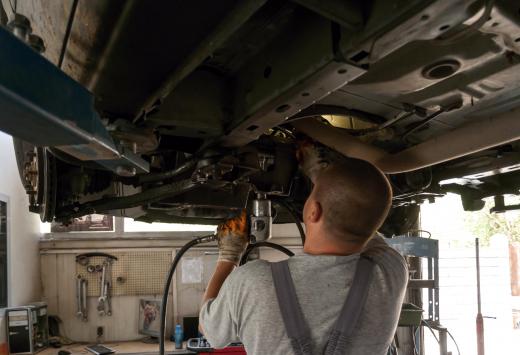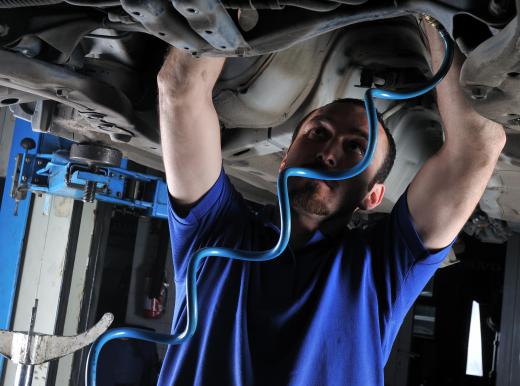A pneumatic hoist, also known as an air hoist, is a device that uses compressed air to facilitate heavy-duty lifting and hauling. It is used most commonly in commercial and industrial shops. Hoists come in three main forms — pneumatic, electric, and manual — though a hydraulic hoist is sometimes used as an alternative to a pneumatic hoist. The devices generally have a cable, chain, or rope spooled around a drum that is attached to a motor or gears. The motor’s source of energy is what determines its type.
Pneumatic hoists generally have a 100 percent duty cycle, which means they can be used constantly without the need for a rest period. The duty cycle and speed at which these hoists operate make them ideal applications for automotive assembly lines. The motors run on compressed air, so there is a minimal amount of heat produced. This is in contrast to electric hoists, which could seize or drop a heavy load if they were to become overheated.

A pneumatic hoist also is commonly found on assembly lines and in warehouses, because the compressed air needed to run its motor is readily available. Many large shops have compressed air available to operate pneumatic tools already in use, so installing a pneumatic hoist is easy. Shops that require repetitive lifting of heavy objects generally use a pneumatic hoist to lessen the burden on employees and to ensure that the hoisting capabilities are always ready to go with no downtime needed. The devices don’t need time to rest between jobs, because the use of air keeps them from running hot and risking a burnout.

A pneumatic hoist can be expected to cost more than the alternatives, but it also is commonly expected to be able to handle heavier-duty work. Deriving its power from compressed air means a pneumatic hoist doesn’t typically overheat the way an electric hoist might. The lack of a need for electricity also reduces the dangers associated with electric sparks in the workplace.
Manual, or hand-cranked, hoists are common on large metal doors found in warehouses and shops. Their use allows one person to lift a door or other object that normally would be too heavy for a single person. Electric hoists are used on heavier-duty jobs that will allow for downtime to cool the motor. Hydraulic hoists often are found in boatyards, where they are used to lift boats into and out of the water.
